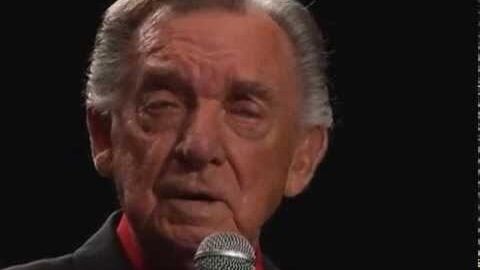Still Smooth, Still Strong: 4 Country Classics That Never Soured

via RayPriceMusic / YouTube
Time has a way of reshaping how we hear music. What once felt moving or edgy can, over time, start to sound outdated or even problematic. That’s especially true in a genre like country, where storytelling often mirrors the values and attitudes of its era. But not every song fades into cringe or controversy as the years roll on.
Some tracks remain untouched by the changing tides—still resonating, still powerful, still smooth. These are the songs that avoid the pitfalls of age, never feeling like relics from a time capsule. They don’t rely on nostalgia alone; they endure because they’re just that good.
The country classics highlighted in this list may no longer dominate radio playlists, but they’ve never lost their impact. They still speak to something deeply human—loss, love, pride, perseverance—without striking a sour note in today’s context.
“There Stands the Glass” by Webb Pierce (1953)
Webb Pierce’s “There Stands the Glass” may have hit the airwaves in 1953, but its message hasn’t aged a day. Written by Russ Hull, Mary Jean Shurtz, and Autry Greisham, the song topped the country charts for 12 weeks and quickly cemented its place in country music history. With its straightforward lyrics and piercing vulnerability, it’s easy to see why artists like Loretta Lynn and Conway Twitty later put their own stamp on it.
Upon its release, the song wasn’t without controversy. Some critics accused it of glorifying drinking, arguing that it set a dangerous precedent for country music’s relationship with alcohol. But time has been kind to “There Stands the Glass.” What was once edgy and suspect has become a pillar of the genre, reflecting a deep emotional truth many listeners still relate to.
In fact, the song’s raw honesty feels more in step with modern country than ever before. Themes of pain, regret, and trying to dull the ache with a glass of something strong are now a common thread in countless tracks. What makes Pierce’s version endure is its sincerity—it doesn’t feel performative or exaggerated. It’s a heart laid bare, and that never goes out of style.
“Heartaches by the Number” by Ray Price (1959)
Ray Price’s version of “Heartaches by the Number” hit in 1959, and its staying power is undeniable. Written by Harlan Howard, the song quickly became a favorite, reaching No. 2 on the country charts and earning new life through covers by everyone from Buck Owens to Martina McBride. Its catchy melody and honest sentiment have helped it endure through decades of evolving trends.
At its core, the song is about the emotional toll of repeated heartbreak—an experience that transcends time and generation. The simplicity of the lyrics makes them all the more powerful. There’s no need for elaborate metaphors or layered instrumentation. Just a voice, a tune, and the truth: getting your heart broken hurts, and sometimes it happens more than once.
Country music has always thrived on stories of heartache, and “Heartaches by the Number” remains one of the genre’s finest. It doesn’t sound dated or overly sentimental. Instead, it serves as a template for how to write a breakup song that feels authentic, even 60 years later. The fact that people are still singing it, covering it, and connecting with it proves its smooth strength.
“Ode to Billie Joe” by Bobbie Gentry (1962)
Bobbie Gentry’s “Ode to Billie Joe” landed in 1962 like a lightning bolt—haunting, mysterious, and deeply resonant. As her debut single, it did more than introduce a new voice; it changed what a country song could be. Its success across multiple charts—including country, R&B, and pop—reflected its broad appeal, but it’s the lyrical depth that’s helped it endure.
What makes “Ode to Billie Joe” so powerful is its quiet ambiguity. The song doesn’t offer clear answers, and that’s exactly the point. Gentry once explained that the real theme was apathy—the way people go on with their lives while ignoring the tragedies around them. That message still strikes a chord today, maybe even more than it did in the ’60s.
Unlike some story songs that feel stuck in their time, “Ode to Billie Joe” feels eerily timeless. The subtle judgment in the family’s dinner conversation, the sense of something left unsaid, the casual cruelty—it’s all still chilling. Gentry’s storytelling invites reflection, not just on Billie Joe’s fate, but on how we process the suffering of others. That kind of emotional resonance never fades.
“The Jamestown Ferry” by Tanya Tucker (1972)
Released in 1972, “The Jamestown Ferry” showcased Tanya Tucker’s ability to channel mature heartbreak even as a young artist. Written by Bobby Borchers and Mack Vickery, the song became a top-five hit and a classic in Tucker’s early catalog. Its influence has only grown with time, attracting new renditions—including a standout cover by Charley Crockett on his 2025 album Lonesome Drifter.
The song tells a simple but aching story: a woman watching the man she loves sail away, both literally and figuratively. It’s a tale of betrayal, disappointment, and emotional fallout—themes that have never stopped being relevant. But there’s also a kind of grace in how the narrator accepts the end, making the heartbreak feel grounded rather than melodramatic.
What makes “The Jamestown Ferry” still feel strong today is its clarity. The emotions it conveys are universal, and the setting—a slow ferry ride into emotional detachment—feels cinematic without being forced. Tanya Tucker’s performance captured that delicate balance between pain and pride, and that’s exactly why the song continues to find new listeners, decade after decade.















